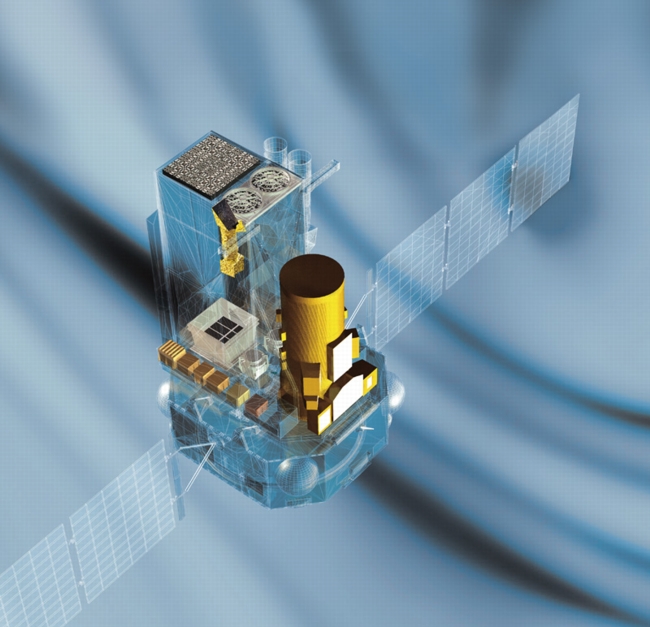
 Credit: ESA
Credit: ESA
Resolving Gamma-Ray Mysteries
The gamma-ray universe contains the most energetic, exotic objects. Since gamma-rays are the most energetic form of electromagnetic radiation, gamma-rays can only be produced by extreme physical processes like stellar explosions and mergers and natural cosmic radioactivity. But gamma rays are difficult to image, so that previous observatories, like the Compton Gamma Ray Observatory had difficulty in resolving crowded sources and in identifying all the different types of gamma-ray emitting objects. A new gamma-ray observatory, the International Gamma-Ray Astrophysics Laboratory or INTEGRAL, hopes to provide the best catalogue of gamma-ray sources. INTEGRAL, pictured above, is dedicated to imaging with high spatial resolution along with obtaining high spectral resolution spectroscopy of gamma-ray sources. INTEGRAL measures emission over a wide range of energy (from 15 keV to 10 MeV) using IBIS, a coded-mask imager, and SPI, a detector with high spectral resolution (but rather low spatial resolution). In addition, INTEGRAL also includes an X-ray monitor, JEM-X, and an optical monitor, the OMC, to extend coverage from the visible to X-ray energy bands. INTEGRAL will be launched by the European Space Agency with launch planned for October, 2002.
Last Week *
HEA Dictionary * Archive
* Search HEAPOW
* Education
Each week the HEASARC
brings you new, exciting and beautiful images from X-ray and Gamma ray
astronomy. Check back each week and be sure to check out the HEAPOW archive!
Page Author: Dr. Michael F. Corcoran
Last modified July 8, 2002


